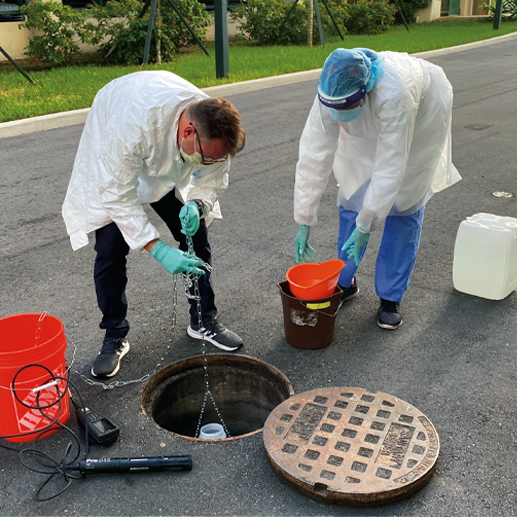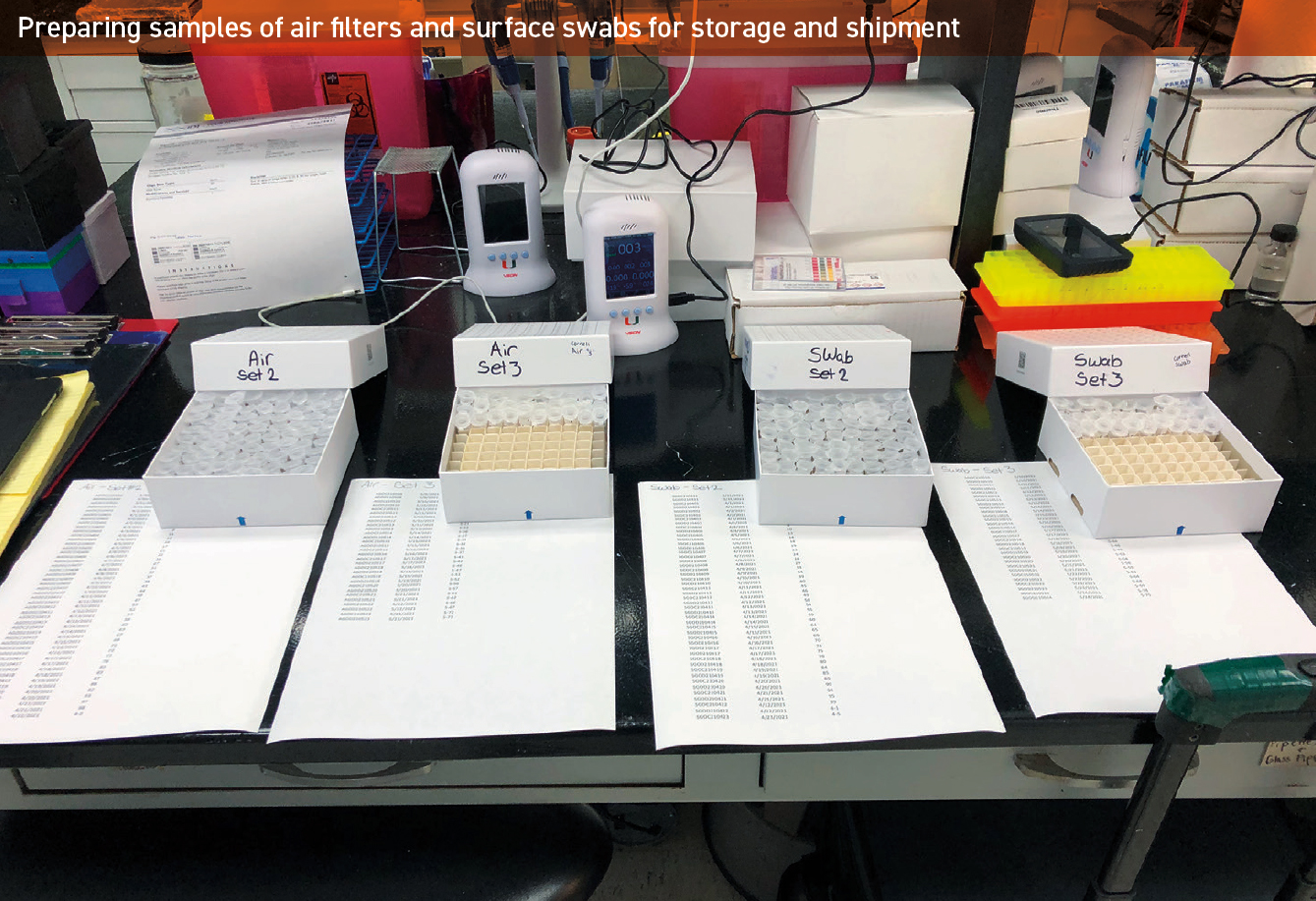
Measuring viral levels in wastewater has become a powerful way to detect COVID before people start showing up in the emergency department. By sampling wastewater from campus buildings, UM researchers can identify outbreaks early. University leaders use the data to target COVID-19 testing, anticipate demand for Student Health Services and assess the need for more isolation and quarantine spaces.
A joint venture with Weill Cornell Medicine, the NIH-funded project is spearheaded at UM by Associate Dean for Research Helene Solo-Gabriele, Ph.D., Associate Director of Shared Resources George Grills and Professor of Pharmacology Stephan Schürer, Ph.D., associate director, data science; interim director, Drug Discovery, Center for Computational Science; and professor, molecular and cellular pharmacology.
“Viral detection in wastewater can provide a 4- to-7-day lead indicator of the number of cases we’re likely to see in hospitals.”
The research is coordinated through UM shared resources, which are centralized facilities that share equipment and expertise with labs throughout the University.
“A shared resource is a research laboratory that has equipment that's far too expensive for any individual investigator to afford,” said Grills. “Because it’s used on a shared basis, it plays a key role in many research projects for a large number of investigators.”

Together, researchers from many disciplines sample air, surfaces and particularly wastewater to track COVID at all three UM campuses. The samples are sent to the Onco-Genomics Shared Resource at Sylvester and Assistant Research Professor Mark Sharkey, Ph.D., who developed a faster analytical method to detect COVID in sewage.
These measurements can be used as “weather maps” to show viral prevalence and predict near-term consequences, a tremendous resource to inform public health decisions.
“If a student residence shows a large uptick in the virus, campus leadership can focus more on testing those students,” said Grills. “Also, viral detection in wastewater can provide a 4- to-7-day lead indicator of the number of cases we’re likely to see in hospitals.”